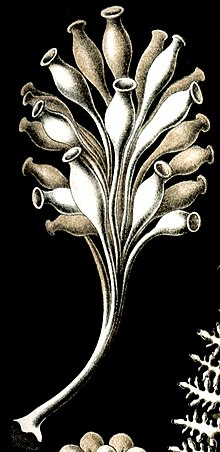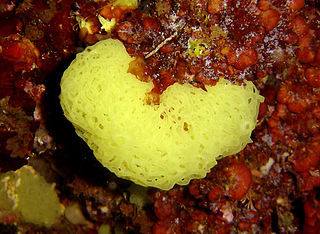
Clathrina is a genus of calcareous sponge in the family Clathrinidae. Several species formerly in Clathrina were transferred to the newly erected genera Arturia, Ernstia, Borojevia, and Brattegardia in 2013. The name is derived from the Latin word "clathratus" meaning "latticed".

Grantia is a genus of calcareous sponges belonging to the family Grantiidae. Species of the genus Grantia contain spicules and spongin fibers.
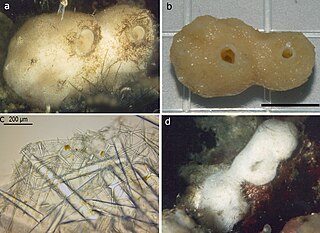
Leucandra is a genus of calcareous sponge belonging to the family Grantiidae. Its earliest known fossils are from the Jurassic.

Trichogypsia is a genus of calcareous sponges in the order Baerida.

Sycon is a genus of calcareous sponges belonging to the family Sycettidae. These sponges are small, growing up to 7.5 cm with a length from 2.5 to 7.5 cm, and are tube-shaped and often white to cream in colour. They are known to aquarium hobbyists as "Pineapple" or "Q-Tip" sponges, and are frequent "hitchhikers" accidentally brought in.

Arturia is a genus of calcareous sponge in the family Clathrinidae which contains 14 species. It is named after Arthur Dendy, a prominent researcher of calcareous sponges. It was renamed Arturia in 2017 because the name Arthuria was already assigned to a genus of molluscs.

Borojevia is a genus of calcareous sponge in the family Clathrinidae. The genus is named after sponge researcher Radovan Borojevic.
Brattegardia is a monotypic genus of calcareous sponge with a single species: Brattegardia nanseni from Norway. The genus is named after the Norwegian marine biologist Torleiv Brattegard. The species is named after Norwegian helminthologist Fridtjof Nansen.
Amphoriscus is a genus of calcareous sponges in the family Amphoriscidae.
Ascandra is a genus of calcareous sponges of the family Dendyidae and are found in oceans around the world.
Baeriidae is a family of calcareous sponges in the class Calcarea. It was named by Borojevic, Boury-Esnault, and Vacelet in 2000. The type genus is BaeriaMiklucho-Maclay, 1870, by original designation, though Baeria is now considered a junior synonym of LeuconiaGrant, 1833.

Soleneiscus is a genus of calcareous sponges in the family Dendyidae.
Ascaltis is a genus of sponges in the family Leucascidae, first described in 1872 by Ernst Haeckel.

Leucetta is a genus of sponges in the family Leucettidae, which was first described in 1872 by Ernst Haeckel. The type species is Leucetta primigenia Haeckel, 1872 by subsequent designation.
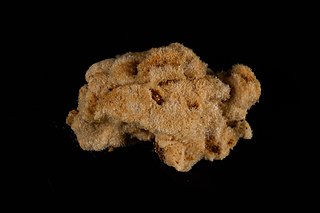
Leucettusa is a genus of sponges belonging to the family Leucaltidae. The species of this genus are mostly known from the Arctic and Antarctic, New Zealand and Southwest Australia.
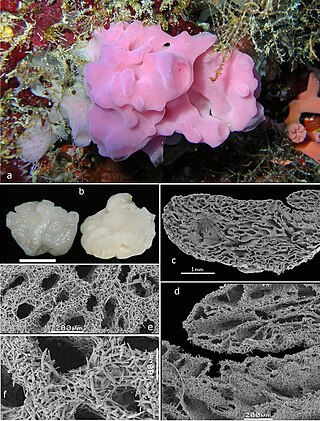
Leucascus is a genus of sponges belonging to the family Leucascidae.

Leucetta primigenia is a species of calcareous sponge in the family Leucettidae, and was first described in 1872 by Ernst Haeckel.

Clathrina lutea is a species of calcareous sponge from Brazilian mid-shelf and oceanic island.
